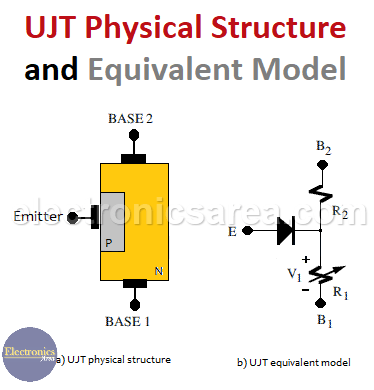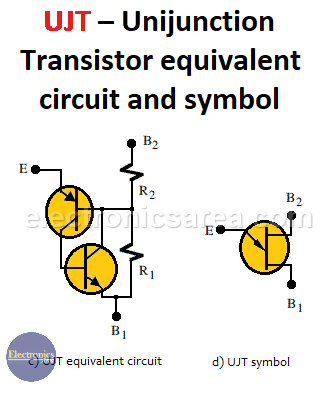Home / Semiconductors /
UJT or Unijunction transistor – Relaxation oscillator using UJT transistor
UJT – Unijunction transistor
The UJT or Unijunction transistor is constituted by two polluted regions, with three external terminals: two bases and one emitter. In the (a) image, the physical structure of this device is shown. The emitter is strongly doped with “p” impurities and the n region weakly doped with “n” impurities.
Therefore, the resistance between the two bases, RBB or interbase resistance, is high (from 5K to 10K when the emitter is open).
UJT Physical Structure and Equivalent Model
The equivalent model represented in the (b) image is constituted by a diode that excites the two internal resistor’s junction, R1 and R2, which verify that RBB = R1 + R2.
When the diode does not conduct, the voltage drop on the R1 resistor (V1) can be expressed as:
where:
- VB2B1 is the voltage difference between the bases of the UJT and …
- The voltage division factor known as the intrinsic relation = R1/(R2+R1) = R1/RBB
UJT – Unijunction transistor equivalent circuit and symbol
The model of this device using transistors is shown in image (c). Its structure is very similar to the four-layer diode structure. When the transistors go into conduction, the voltage drop in R is very low. The symbol of the UJT is shown in the image (d).



